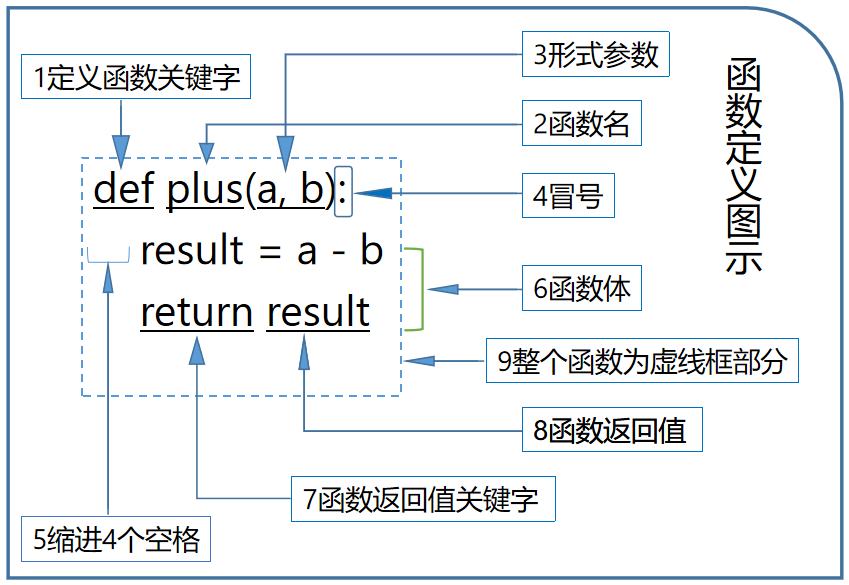Python3笔记026 - 6.1 函数的定义和调用
第6章 函数
- 6.1 函数的定义和调用
- 6.2 参数传递
- 6.3 函数返回值
- 6.4 变量作用域
- 6.5 匿名函数(lambda)
- 6.6 递归函数
- 6.7 迭代器
- 6.8 生成器
- 6.9 装饰器
6.1 函数的定义和调用
6.1.1 定义函数
def functionname([parameterlist]):
['''comments''']
[functionbody]
参数说明:
functionname:函数名称,在调用函数时使用;
parameterlist:可选参数,用于指定向函数中传递的参数;
comments:可选参数,注释的内容通常说明该函数的功能、要传递的参数的作用等。
functionbody:可选参数,称为函数体,函数被调用后要执行的功能代码。
注意:即使没有参数,也必须保留那一对括号,要不然报语法错误;
# 定义plus函数
def plus(a, b):
'''减法函数'''
result = a - b
return result

6.1.2 调用函数
函数在调用之前必须先定义。
functionname([parametersvalue])
参数说明:
functionname:函数名称,
parametersvalue:可选参数,
# 函数直接被调用
def func1():
return "This is func1's returnvalue"
def func2():
return "This is func2's returnvalue"
f1 = func1() # 调用时带括号
f2 = func2 # 调用时不带括号
print(f1) # 打印出来的是f1函数的返回值
print(f2) # 打印出来的是f2函数的内存起始地址
print(f2()) # 打印出来的是f2函数的返回值
output:
This is func1's returnvalue
<function func2 at 0x0000025568413438>
This is func2's returnvalue
# 函数当作其他函数的参数被调用
def func1():
print("This is func1 function")
return "This is func1's returnvalue"
def func2(b):
print(b)
print(type(b))
b()
print(type(b()))
print(b())
return "This is func2's returnvalue"
print(func2(func1))
output:
<function func1 at 0x0000023C50634948>
<class 'function'>
This is func1 function
This is func1 function
<class 'str'>
This is func1 function
This is func1's returnvalue
This is func2's returnvalue
# 函数当作其他函数的返回值被调用
def func1():
print("This is func1 function")
return "This is func1's returnvalue"
def func2():
return func1
f = func2()
print(f())
output:
This is func1 function
This is func1's returnvalue
敬请关注个人微信公众号:测试工匠麻辣烫

敬请关注个人微信公众号:测试工匠麻辣烫




 浙公网安备 33010602011771号
浙公网安备 33010602011771号